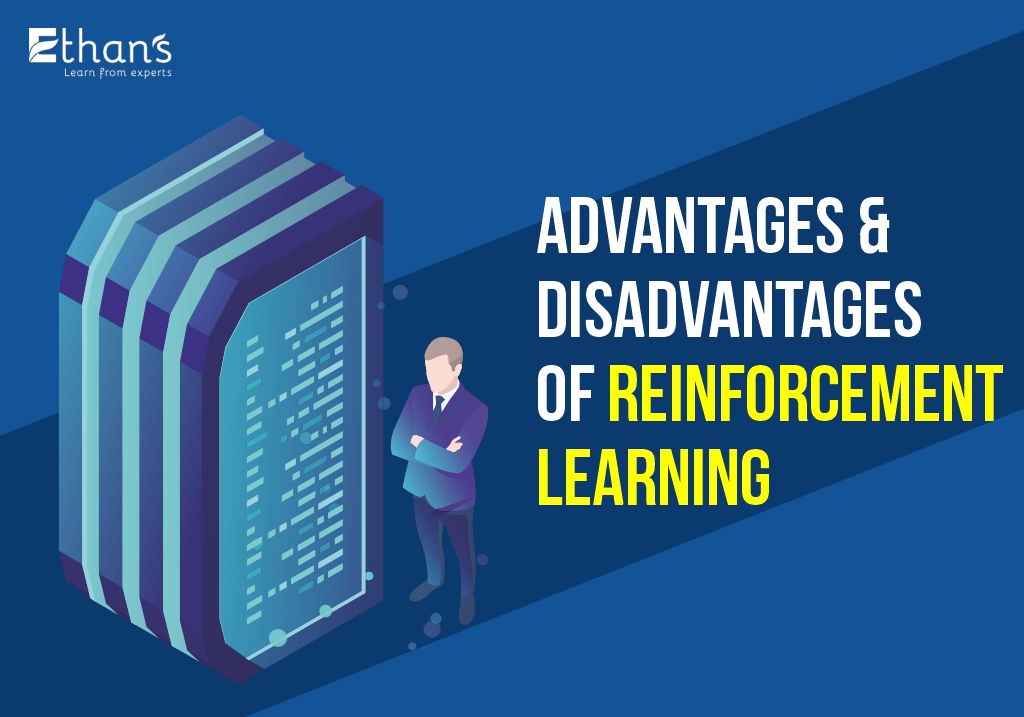As human beings, we learn from mistakes and feedback. We make improvements based on what we learn from our errors and the feedback we receive.
Nothing new, right? But here is something interesting.
Imagine an algorithm you adhere to, seeking inspiration from you.
It learns from errors and adapts to complex environments over a while, just like you!
This is intriguing, isn’t it? That’s reinforcement learning! It is an exciting realm within ML where algorithms learn to make decisions by trying and erring.
Reinforcement learning is emerging as a new technology helping tackle problems where decision-making is chronological and its outcomes unfold over a period. Hence, many industries, including manufacturing to gaming, are employing reinforcement learning.
However, as with other technologies, reinforcement learning also has pros and cons.
So, whether you are looking to pursue a data science course in Pune or an ML course in Pune, you must know what reinforcement learning is and its pros and cons.
Advantages of Reinforcement Learning
From generating own training data to higher autonomy, here are some of the pros of reinforcement learning.
-
Reinforcement Learning Doesn’t Require Labeled Data
The algorithms of reinforcement learning don’t need large, labeled datasets. They generate their own training data by interacting with the environment. This proves to be a substantial advantage in tasks for which data labeling is impractical or costly.
-
Innovative Approach
Reinforcement learning agents can work out innovative and creative solutions to problems never considered or touched upon by human beings. They aren’t confined to replicating the dataset they’ve been provided. Hence, they can uncover new approaches and strategies to address and solve seemingly impossible problems.
-
Objective-Driven
Reinforcement learning is meant for sequential decision-making. It can learn to optimize a cumulative reward over time. Thus, it makes decisions that prioritize long-term objectives over fleeting goals, benefits, or instant gratification.
-
Complex Problem Handling
Contemporary problems are complicated. Hence, they require decision-makers to think differently and adopt innovative approaches. This is where reinforcement learning steps in. It solves complex issues that involve a significant number of states and actions.
For instance, when leveraged appropriately, reinforcement learning can help optimize something as complex and extensive as supply chains.
-
Adaptability and Dynamicity
Adaptability is one of the differences between a successful human being and a less successful one. This applies to the business world as well. However, many companies struggle to make decisions amidst the evolving business environment.
Reinforcement learning proves to be a beneficial addition for such businesses. Its models adapt to new or changing business landscapes in real-time without requiring extensive retraining. Hence, they are ideal for dynamic systems like autonomous vehicles.
-
Error Correction Throughout the Training Process
Reinforcement learning involves a continuous feedback loop of rewards and penalties. The model can thus rectify errors and enhance performance during the training process.
Now, let’s look at the flip side of the coin – the cons of reinforcement learning.
Disadvantages of Reinforcement Learning
Reinforcement learning can prove to be disadvantageous in various ways, including;
-
Incompatibility with Simplified Problems
Generally, reinforcement learning cannot be used to solve straightforward problems. It is also because setting up a reinforcement learning framework can be costly for simple tasks. Hence, in such cases, reinforcement learning can be less efficient.
-
High Computational Costs
Reinforcement learning can require an extensive amount of computation and time, particularly in complex environments, involving numerous actions.
-
Challenges in Designing Reward Functions
Designing an appropriate reward function can be challenging and complex. An inadequate or incompetent reward may result in unintended agent behavior.
-
Debugging and Interpretation Complexities
Debugging and interpreting a reinforcement learning agent’s behavior can be complex. Understanding the causes of the behavior cannot always be straightforward. In situations like these, diagnosing and troubleshooting issues can become challenging.
This can impede the deployment of reinforcement learning systems in applications like autonomous driving or healthcare, where safety is of utmost importance.
-
Sample Inefficiency
Another disadvantage is sample inefficiency. Reinforcement learning can be sample inefficient, requiring a significant amount of data to learn effectively. It often leverages the trial-and-error approach that can take a long time for an agent to perfect decision-making and learn optimal behaviors.
Final Words!
While offering promise, reinforcement learning also comes with a range of challenges. Understanding its nuances is crucial for aspirants looking to broaden their AI expertise and horizon. It is vital even for someone looking to go for a data scientist course in Pune, an AI course, or an ML course in Pune, as reinforcement learning eventually has data as its nucleus.
Join Ethan’s Tech if you want to champion concepts like reinforcement learning. Our data science classes in Pune, machine learning training in Pune, etc., cover these new, emerging, and evolving technologies comprehensively. The courses focus on learning what’s current and helping you prepare for the future. So, don’t wait and think. The right time to pursue these courses is NOW. Call us at +91 95133 92223.



